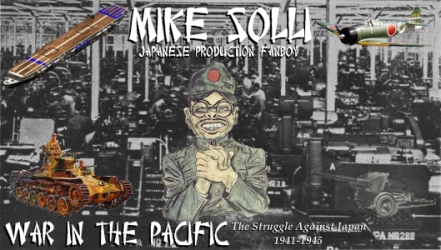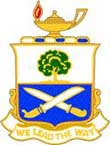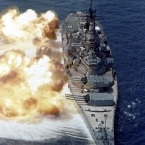jrcar
Posts: 3613
Joined: 4/19/2002
From: Seymour, Australia
Status: offline

|
Yes we (the whole team) understands this issue, and it is at the fore front of any decision.
The problem is complex problems need complex solutions at times.
Stock allows things to happen too easily and quickly. This is actually a very complex problem.
If you want a simple game then AE may not be for you, sorry.
If you want to get closer to understanding the issues and limitations of WW2 operations and strategy, then AE is a good choice.
Personnally I've found the air replacement thing hard to grasp, I do like the impact it is having in the game though. Maybe there is an easier way... but I doubt it.
The rules allow a lot of flexibility to represent what was possible (or what was actually done) in WW22, while limiting what was not possible.
BUT the AAR is here to expose things, feel free to comment, if there is time it will get reviewed, otherwise it may go to a patch... or maybe this is the best way to do it.
quote:
ORIGINAL: pad152
Reading the following rules just makes my head hurt and makes me wonder if AE has been in the oven a little too long (over baked)!  The manual is going to be as much fun to read as a IRS document and just about as clear! The manual is going to be as much fun to read as a IRS document and just about as clear!
Why have exceptions to rules? This will do nothing but produce endless questions, why do I have all of these air group fragments, why do I have all of these damaged air groups etc. etc.
quote:
Note Japanese build rates are usually 0 when production is on
Huh, this is clear as mud !!! Wouldn't build rates be zero when production is off!
Air Replacement Rules
quote:
Air units will automatically gain replacements under certain circumstances if aircraft are available in the replacement pool and the air unit has been set to Accept Replacements. To get replacement aircraft to flow automatically into an air unit, there must be planes in the pool and one of the following cases must be true (the first true will take effect):
• The air unit is located at a base with an airfield size of 1+ (or 0 if a float-equipped group and the base is in a coastal hex) and the base has over 20,000 supplies. Supplies will be expended at the base and the unit will receive damaged planes from the pool (they may repair before the next orders phase during the repair phase).
• The air unit is located at a base and the HQ that the group is assigned to is within transfer range of the air unit’s aircraft type, and the HQ is located at a base with an airfield size of 1+ and has over 20,000 supplies. Supplies will be expended at the HQ base and the unit will receive damaged planes from the pool.
• The air unit is located at a base and the Command level HQ that the group is assigned to is within transfer range of the air unit’s aircraft type, and the Command HQ is located at a base with over 20,000 supplies. Supplies will be expended at the HQ base and the unit will receive damaged planes from the pool.
• The air unit is located on a ship and a replenishment air unit is within normal range of the ship, the unit will receive planes from the replenishment unit instead of the pool.
• The air unit is located on a ship in the same hex as a base with an airfield size of 1+ (TF or at anchor) and the base has over 20000 supplies. Supplies will be expended at the base and the unit will receive damaged planes from the pool.
Rule Exception 1
quote:
If none of these conditions apply, land based air units may automatically have a sub unit created for it at the base containing the HQ that the air unit is assigned to or the Command HQ of the air unit’s HQ if it is not in the base. The base with the HQ must have supplies that are at least equal to twice the base’s supply needs plus the supplies that will be expended in creating the sub unit, the supply base must be within twice the maximum range of the aircraft type, and there must be planes in the pool equal to:
• 10 + (plane build rate / 2)
If these conditions are met, a sub unit of damaged planes will be placed at the HQ’s location and supplies will be expended from the base. Note Japanese build rates are usually 0 when production is on. Another subgroup will not be formed for the air unit until at least 7 days have elapsed.
A maximum of 12 planes will be added for replacements at a time.
|
 Printable Version
Printable Version
























 The manual is going to be as much fun to read as a IRS document and just about as clear!
The manual is going to be as much fun to read as a IRS document and just about as clear! 


 New Messages
New Messages No New Messages
No New Messages Hot Topic w/ New Messages
Hot Topic w/ New Messages Hot Topic w/o New Messages
Hot Topic w/o New Messages Locked w/ New Messages
Locked w/ New Messages Locked w/o New Messages
Locked w/o New Messages Post New Thread
Post New Thread